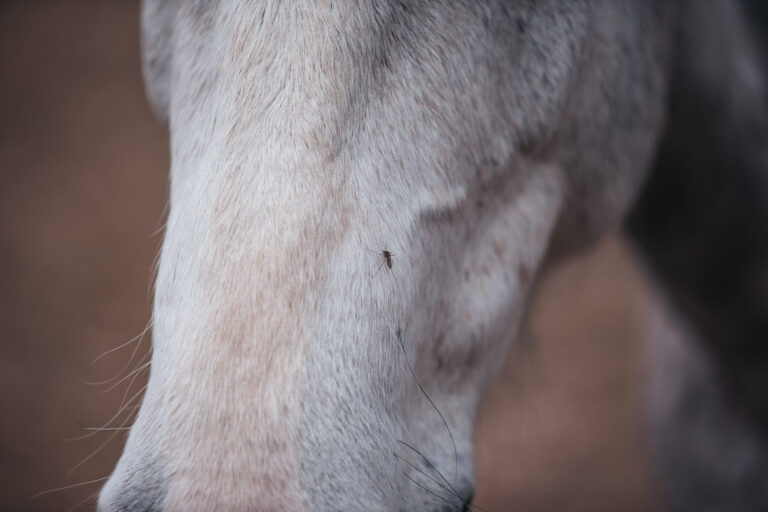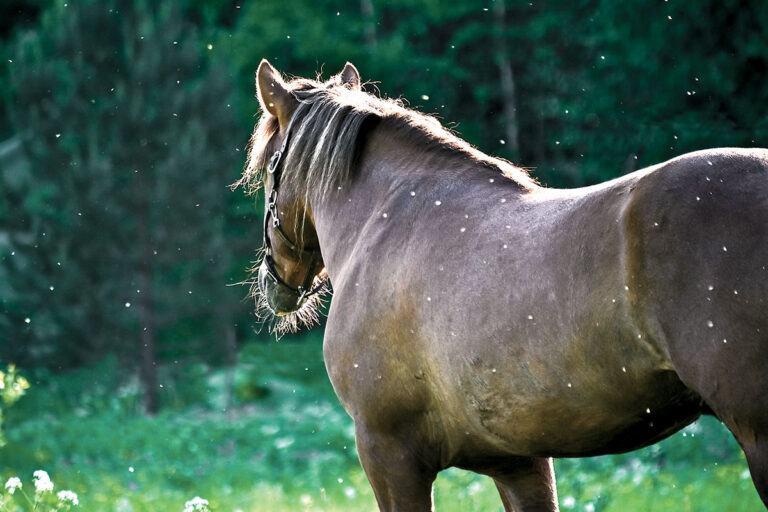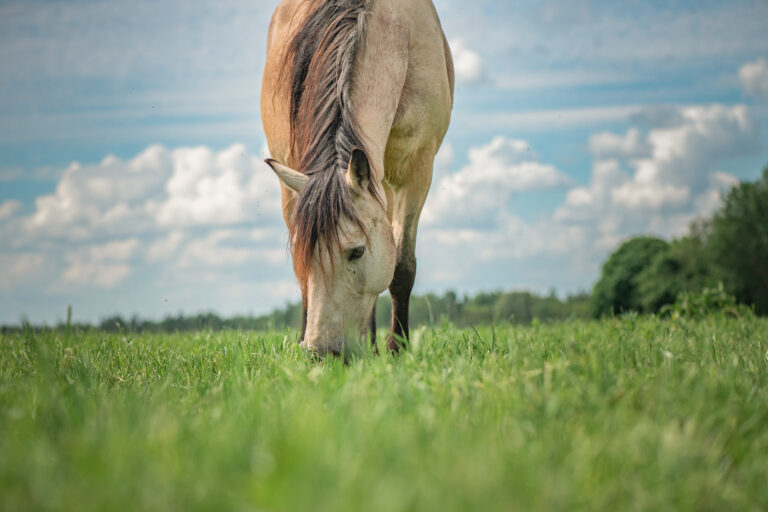
Horses, with their large nostrils, inform their world and communicate through the sense of smell. A research group sought to evaluate how chemical signals, such as human odors, could be perceived as emotional communication to horses [Jardat, P.; Destrez, A.; Damon, F.; et al. Horses discriminate human body odors between fear and joy contexts in a habituation-discrimination protocol. Scientific Reports 2023, vol. 13:3285; doi: 10.1038/s41598-023-30119-8].
Habituation-Discrimination Test
A habituation-discrimination test relies on two presentations of an odor in successive trials. The habituation phase is first. Then, the same odor and a novel odor are presented simultaneously during the discrimination phase. Researchers expect the duration of sniffing to decrease with habituation. Sniffing is expected to increase for the novel sample compared to the repeated sample during the discrimination test.
During a habituation-discrimination test, researchers observe whether a horse preferentially uses an ear, eye or nostril to evaluate the sample. Vision and auditory senses speak to the contralateral hemisphere of the brain; olfaction speaks to the ipsilateral hemisphere. Previous studies have demonstrated that domestic mammals tend to use the right hemisphere for negative/intense stimuli and the left hemisphere for positive/familiar stimuli. As an example, the right nostril is used to sniff arousing or novel odors.
Equine Human Odor Discrimination Study
This study aimed to determine if equine scent can discriminate between human body odors related to joy or fear, and if the horses showed an emotional reaction to these different body odors. Thirty Welsh mares were used in the study. Human axillary sweat was collected from 24 adults (6 men and 18 women). Each person watched a 20-minute video that provoked fear or joy, and after 24 hours repeated the video watching. Armpits were cleaned prior to watching and then cotton pads were placed in the axillary region under a clean, unscented t-shirt. The pads and t-shirts, in airtight sealed bags, were frozen at minus 40 F for up to six weeks. Prior to each habituation-discrimination test, the samples were thawed in their bags at room temperature.
A five-foot-long wooden stick was used to present the samples to each horse through a metal gate. Then three pads from “joy” and one from “fear” (or vice versa) were sniffed by each horse. During the habituation phase, each sample was presented at three feet from the ground for two minutes. Then, a minute-long pause was provided before offering the next sample of the same joy or fear condition. After another minute, the discrimination phase began. During this phase, one sample of each condition—joy and fear—were presented at the same time 20 inches apart.
Study Results
The results:
- During the habituation phase, the left nostril was used more often than the right nostril, indicative of exploration of positive or familiar stimuli.
- During the discrimination phase, the right nostril was used more often than the left, which is associated with negative/intense stimuli.
The researchers concluded that horses can discriminate between human odors related to joy or fear and respond emotionally according to the odor. This is relevant information that might affect interactions between horses and their owners, riders or caretakers.




